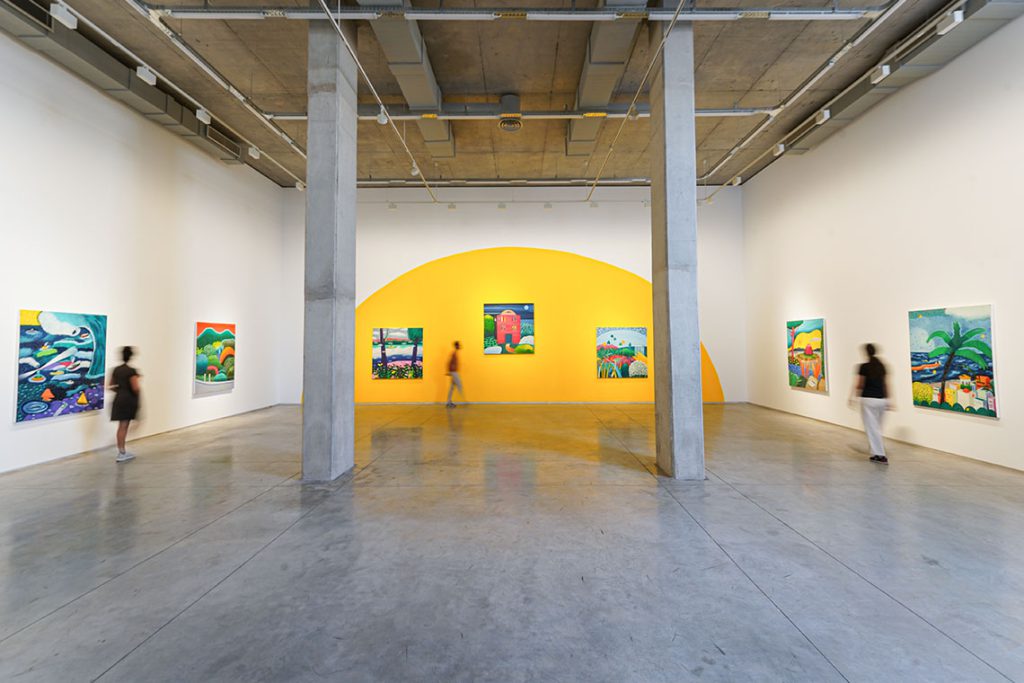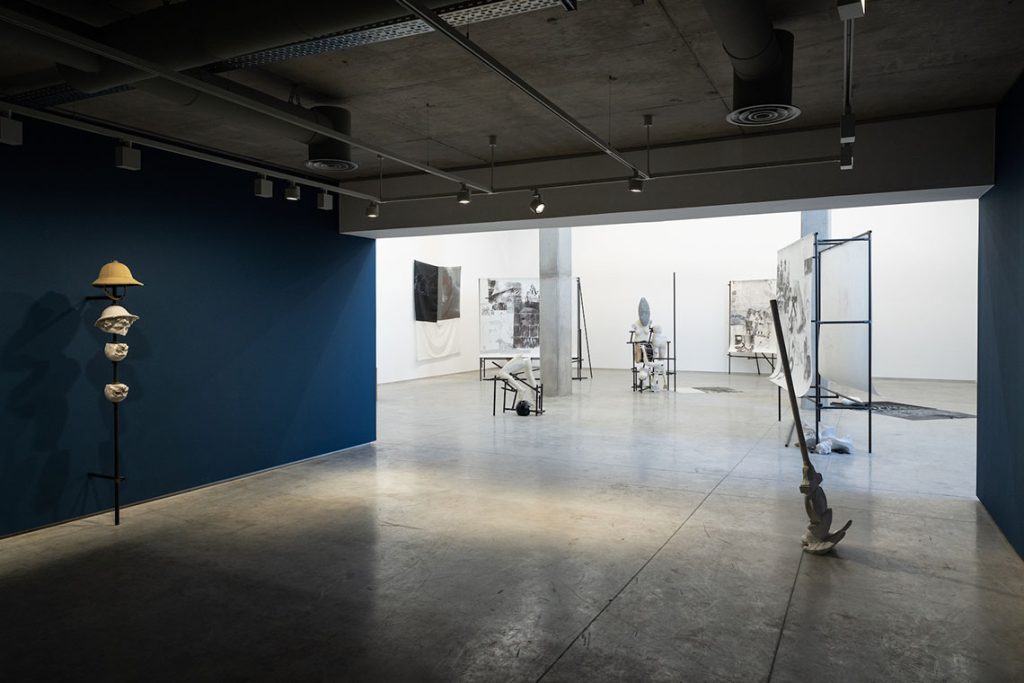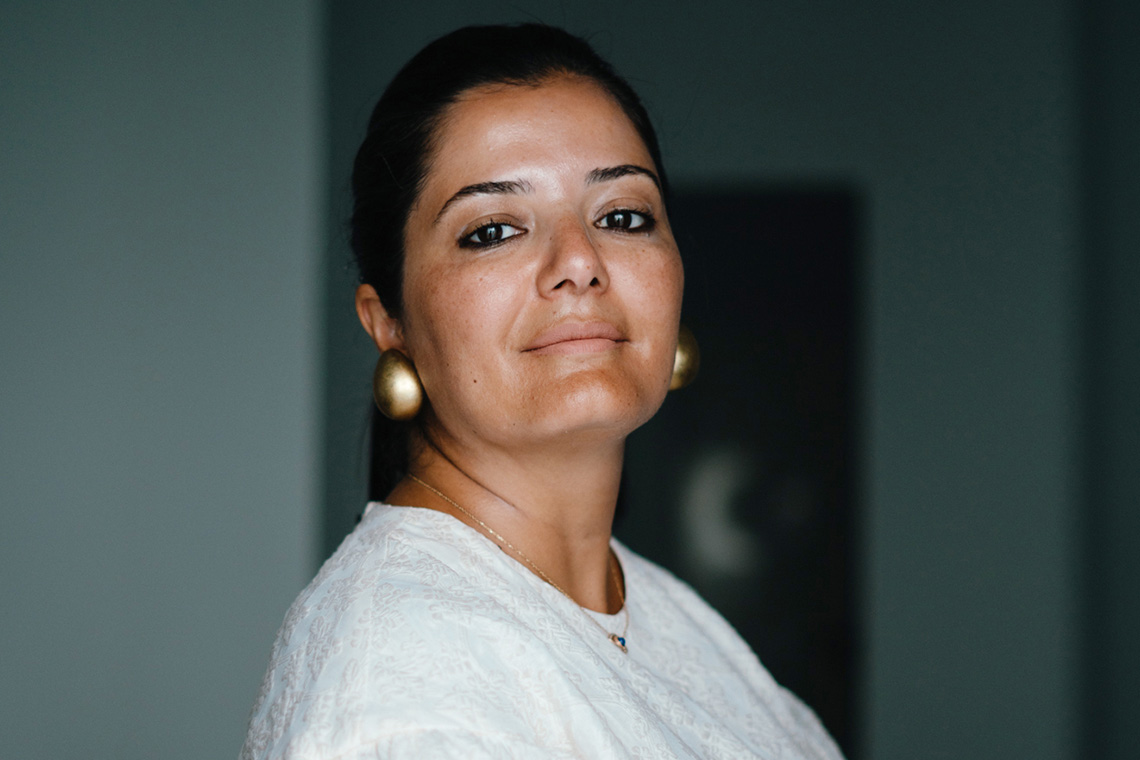Representing artists from the MENA region and beyond, the Tunisian gallerist and collector believes in art as a torchbearer for dialogue and exchange.
Canvas: How did you begin working in art?
Selma Feriani: I grew up in Tunis, did my university studies there, and then moved to London to work in asset management. I realised very quickly though that I wanted to do something else. My mother is a gallerist and I grew up surrounded by artists, mainly from North Africa and the Middle East. They were much more my crowd. I felt it would be interesting to explore showing these artists in the UK, which is how I started in 2013. When I opened the gallery in London, presenting artists from the MENA region, interest from collectors and institutions was almost non-existent. It took some time for the gallery programme to be noticed and appreciated. The management of an art gallery is not simple, it requires very precise organisation and business skills to make it work. Things really started picking up and the West became more and more interested in what was happening in the Middle East and North Africa.
You launched Selma Feriani Gallery in London before opening in Sidi Bou Said.
I opened the gallery right after the revolution. My country was going through real turmoil, and simultaneously a regeneration in terms of culture and the use of public space. That was something very noteworthy, because during the dictatorship it was almost impossible to use public spaces for art and cultural interventions. Right after the revolution, everyone was out in the streets holding performances and discussions in public. I felt that it was important to support North African artists from a new base in Tunisia, so in 2013 I opened the Sidi Bou Said gallery in an old convent that I refurbished. My idea was to create a context that was the opposite of the typical white cube space that you see in London, Paris and New York, and work in an old residence instead. The building is typical of traditional Tunisian architecture, in that it features a patio surrounded by differently sized narrow rooms. This arrangement means that every project is site-specific, as well as particular to the local community and to North Africa in a broader sense.
Can you tell us about the new space to which you relocated in 2024?
Yes, it’s really my baby and something I just gave birth to a year ago. I built it from scratch, and I consider it to be one of the largest museum-quality galleries in Africa. It has about 2500 square metres of exhibition space, offices, storage, a library and a bookstore, more like a little art centre really. In parallel, I have developed L’Atelier, a residency programme and a production studio for artists to reflect on the art scene in Tunisia.

How significant is space to the ways in which your artists make or think about their work?
I decided to move from the old site because most of the artists had used the spaces there at least three or four times and exhausted all options. I felt that I was at the end of that particular journey and it was now time to be in an open white cube situation, where it would be possible to work on monumental presentations and two simultaneous exhibitions, for example. The gallery had become more established and attracted more international collectors, so it was important that the space was also able to grow. Space is not the most crucial thing, but it is important that I am able to push my artists to work on a larger scale, especially as they have started participating in biennales and placing works in museums.
I want to be as experimental as possible and also expand what we do by hosting performances, talks, workshops and guided tours. I want to see more people coming, talking to us, spending time at the bookstore without needing to spend. Students can come have a drink for free, sit and read. It’s a mission for future generations. I want to be remembered not only as a gallerist who did a lot for our artists in North Africa, but also as someone who created a place that is completely open to all kinds of conversations.
What do you see as the pillars of your gallery?
When I started, I was working mainly with artists from North Africa. Then I brought in the Middle East. I tried to show what I like, what I can do, what I think. I am a collector as well, I collect what I see, what I like and when I have interesting conversations with artists, no matter where they come from. Latin America was also part of my journey, because I met so many artists from that region in London. I also decided that the Global South should be represented in the gallery because why not? Let’s broaden it out to create more conversations and bridges. We don’t represent modern artists, but we do incorporate works from our family collection in our curated programme.
Which artistic connections between North Africa and elsewhere do you find especially interesting?
The linkages have much to do with the history of a place. For example, Tunisia has over 3000 years of history and different layers of culture, from the Phoenicians and Romans to the Ottomans and the French occupation. The subjects for creative attention are wide-ranging. Most local artists refer to what has happened and try to go back in history and create a contemporary overview, but they are also very open to communicating with other artists from the West or the South. When we invite artists from Latin America to come and spend time, travel and meet artists with us in Tunisia, there is a lot in common in terms of political history, such as with Chile’s revolutions. These are all very interesting paths for research and conversation. I enjoy connecting artists from different parts of the world, it’s something I’m really interested in and am trying to develop.
How important are geographical categorisations when considering artists and their work?
I don’t think they are relevant anymore. Coming from a small country like Tunisia, you have no choice but to be open to the world. We can’t be closed, it’s neither healthy nor inspiring, and I don’t think it’s enough, even though Tunisia is an amazing place with an incredible history. Looking beyond national or regional boundaries helps develop a critical conversation and a different narrative, and also lets the outside world view us differently. That’s why, as a gallery, it’s very difficult to say “Okay, I’m only representing artists from North Africa” when, for example, I am interested in an artist whom I met in Argentina, in their practice, narrative and the connection I could create. I cannot limit myself. I’m here primarily to enjoy myself, but also want to build bridges and expand this international and universal narrative. Artists are the only people capable of creating it – politicians have never been able to. Artists are the real conductors and force behind meaningful and constructive conversations.

Who do you see as among the most significant North African artists active now?
There are some who are already established, such as Zineb Sedira, who represented France at the 2022 Venice Biennale. The younger generation includes Nidhal Chamekh (see page 108), who is developing an interesting critical narrative about what happened in North Africa in terms of the French occupation. He is going back into the archives, which is a key aspect of his work because what’s important for these artists is for their practices to be conserved for future generations and be placed in museums as references or case studies. There are also artists who have been rediscovered, such as Amina Saoud Aït Khay, who treats tapestry and weaving as if she were a painter. She was working for years, but not exhibiting in public. It’s part of our role as galleries to look for these hidden artists and put them at the forefront.
How have the nature and role of a gallery evolved in recent years?
Post-Covid, we definitely felt a change: online conversations, sending previews, selling via Whatsapp. At the beginning I was very reluctant, because I would never buy an artwork if I couldn’t see it, feel it, have a conversation with the artist in order to learn more about the process and context of what I was looking at. As a gallerist, I very much enjoy receiving visitors and having discussions, but I also felt that if I didn’t move forward I would go backwards. Everything is online now, including fairs and studio visits. I’m so happy that we are kind of moving back to pre-Covid, but it won’t ever be 100 per cent. Many collectors enjoy receiving our previews and acquiring works via Whatsapp or online, rather than coming to the gallery. That’s why we participate in art fairs. Even though we also show in London at Cromwell Place, we have to move towards the centre of the art market, so that means attending fairs in London, Paris, New York, Dubai and Abu Dhabi.
Are you optimistic about the future of the art scene in Tunisia?
Definitely, even though it’s a small country with a lack of governmental initiatives and support. The art scene – galleries, festivals such as Jaou and Dream City, art centres like La Boîte, 32Bis and B7L9 (see page 128), plus residencies including Mouhit and Nesij – is based on the private initiative of collectors, patrons, philanthropists and sometimes artists. When the government cannot help, everyone comes together to create something out of a shared passion. The art scene is growing very strongly right now, partly because we have such amazing patrons who help artists by covering studio expenses and other costs. An especially interesting example of patronage is the Gasworks residency programme in London, which has launched the first-ever open call for Tunisian artists, supported by a Tunisian collector couple. When people read the news, they may think only of the country’s problems, but in terms of the art community and development, we really help each other. There is a lot of communication and collaboration. The only way is to think outside the box and to think as a community. As with anything in life, you need to be inclusive.
This interview first appeared in Canvas 117: The Maghreb Issue



